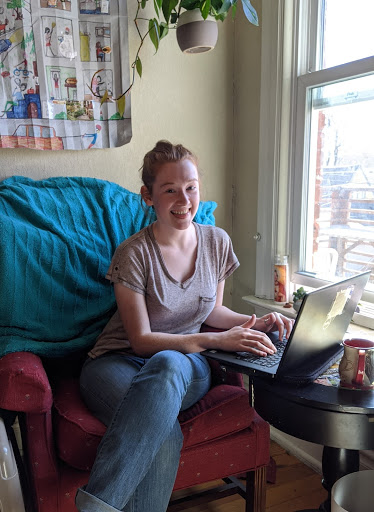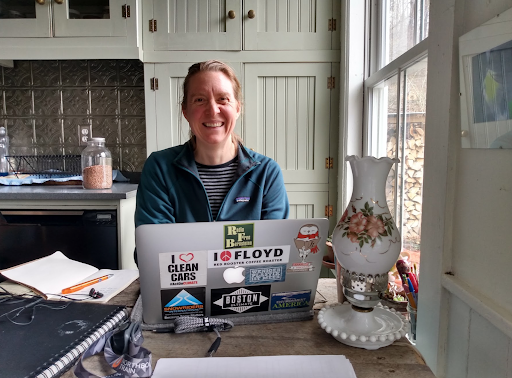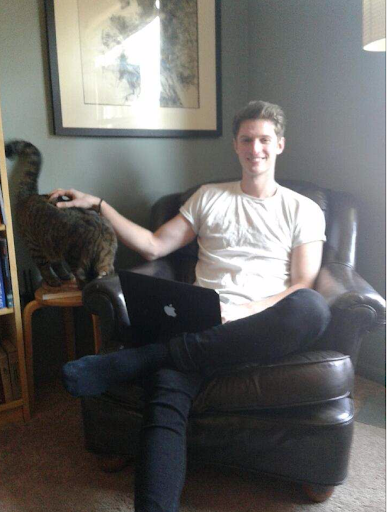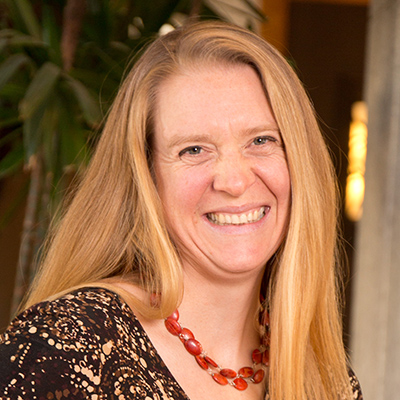Five energy-saving tips from Environment America’s clean energy team
The coronavirus pandemic means that we’re all spending more time at home. This shift in “place” also means a shift in how we consume energy. We’re keeping the lights on longer in our homes. We’re doing the dishes and turning on the microwave more often. We’ve left communal spaces, which means we’ve also left communal energy consumption, and isolating our energy use as we isolate ourselves. For some, this might mean an uptick in electric bills, even at a time of financial uncertainty.
How you can reduce energy waste while staying at home
The coronavirus pandemic means that we’re all spending more time at home. This shift in “place” also means a shift in how we consume energy. We’re keeping the lights on longer in our homes. We’re doing the dishes and turning on the microwave more often. We’ve left communal spaces, which means we’ve also left communal energy consumption, and isolating our energy use as we isolate ourselves. For some, this might mean an uptick in electric bills, even at a time of financial uncertainty.
Like many across the country, the staff of Environment America’s clean energy team, are working from home. Here are some of the tips we’re employing to lower our energy use and continue to be energy-conscious in this time of socially distancing.
Tip #1: Slash your microwave oven’s energy waste
From Bronte Payne, Go Solar campaign director.

Since we first put out our Citizen’s Guide to Reducing Energy Waste in 2018, there has been one fact that has stuck in my brain. I have not only told it to all my friends, my family but the other members of the clean energy team have also heard me repeat it over and over again (my apologies Emma, Graham, Johanna and Ben). Here’s the fact:
The average microwave uses more power displaying the time in one year than it does heating your food.
To stop that energy waste, I unplug my microwave whenever I’m not using it. If that’s too draconian for you, you can also just turn down the brightness on the display screen to reduce the amount of energy that the microwave is using. While this one small step doesn’t cut all that much energy use, it does give me peace of mind to know that I’m not using energy on things I really don’t need – like the lights on my microwave display.
Tip #2: Nix your Screensaver
From Graham Marema, clean energy digital campaigner

As the clean energy team’s digital campaigner, I do almost all of my work on my laptop — whether that’s writing, editing videos, making social media graphics or sending emails to our members. That keeps electronic device energy use at the top of mind. One tip I’ve learned to reduce needless energy waste is turning off my screensaver. When I get up to stretch or grab a snack, my screensaver flicks on, and that means my computer is still using power. Instead, I’ve switched my laptop to enter sleep mode whenever I step away for a few minutes.
I’ve tried to apply this idea to my other non-work devices, such as fully powering down my TV when I’m finished using it. In fact, in a year, TVs, cable boxes or video game consoles on average use more energy in “standby mode” than they do in active use. In the days ahead, my goal is to make sure my devices are only consuming energy when I’m actively using them.
Tip #3: Let dishes dry on their own
From Emma Searson, 100% Renewable campaign director

My kitchen table has become my home office, so I’ve been paying more attention to how my kitchen appliances consume energy throughout the day. Just one week into my new work-from-home routine, I’ve already learned a few things about my dishwasher.
For one, I’ve long known that my dishwasher is terrible at drying dishes. Even when I turn on the heat-dry feature, everything comes out sopping wet. Now that I’m around throughout the day, I’ve started to skip the heated dry and air-dry all of the contents. As soon as the cycle ends, I just open up the door, roll out the top and bottom racks, and let nature do its thing. Not only are my dishes much dryer with no additional work on my part, but the dishwasher is hogging less energy with every wash.
I’ve also learned that my choice in dish soap makes a big difference. My dishwasher is a fairly new, high-efficiency model, and it includes different settings for powder dish soap versus pods. I used to use pods, but recently learned that the machine needs to run a longer cycle with additional hot water in order to fully dissolve them. Since switching to powder detergent, it’s now able to clean a full load in just over 30 minutes, and I’m saving on both detergent and utilities. Now that I’ve got one appliance figured out, I’m excited to see what I can learn about the rest.
Tip #4: Teach your kids to be “energy savers”
From Johanna Neumann, Senior Director, Campaigns for 100% Renewable Energy

My kids are the biggest energy suck in our apartment. They careen from room to room, turning on lights and radios, and cranking the heat up to unreasonable levels (among other high energy use activities).
So, on our weekly chore chart, we’ve now added an ‘energy saver’ feature. If Oscar or Moritz turns off five lights it counts the same as one chore. Routinely, when they make the rounds after dinner they get as many as nine ticks as they compete to be the one to turn off any excessive lighting. This positive reinforcement will hopefully help form life-long conservation habits.
Tip #5: Unplug your energy vampires
From Ben Sonnega, Go Solar advocate

As someone who considers himself relatively active, staying home from work has proven a massive challenge to my antsiness. My day might start at my desk, then move to the couch, then back to the desk, and then to the kitchen counter all before lunch. This much shifting around means moving my power supply. My phone and laptop conveniently notify me when my device is fully charged and it’s time to unplug. But did you know that your chargers still use energy when they’re plugged into the wall even if there’s no device charging?
Forgetting to unplug your chargers from the wall once you’re done juicing up your electronics can be a hugely unnecessary energy suck. So if you’re like me and can’t stay in one place for very long, make sure to both unplug your devices and those chargers when you move — or you could end up with some energy-sucking vampires stuck in the wall.
To learn more about how you can make your home more energy-efficient, check out our Citizen’s Guide to Reducing Energy Waste.
Authors
Ben Sonnega
Bronte Payne
Emma Searson
Graham Marema
Johanna Neumann
Senior Director, Campaign for 100% Renewable Energy, Environment America Research & Policy Center
Johanna directs strategy and staff for Environment America's energy campaigns at the local, state and national level. In her prior positions, she led the campaign to ban smoking in all Maryland workplaces, helped stop the construction of a new nuclear reactor on the shores of the Chesapeake Bay and helped build the support necessary to pass the EmPOWER Maryland Act, which set a goal of reducing the state’s per capita electricity use by 15 percent. She also currently serves on the board of Community Action Works. Johanna lives in Amherst, Massachusetts, with her family, where she enjoys growing dahlias, biking and the occasional game of goaltimate.



